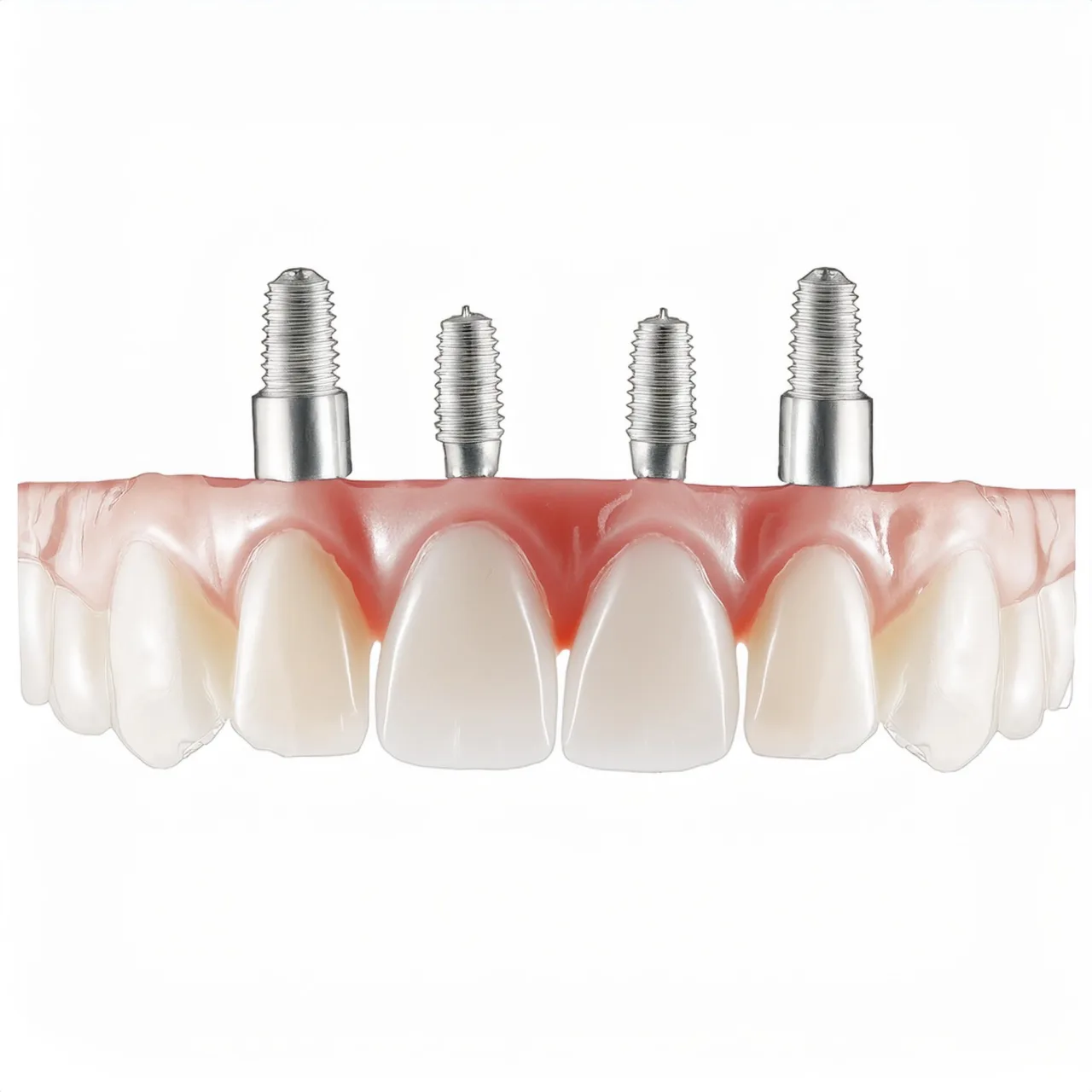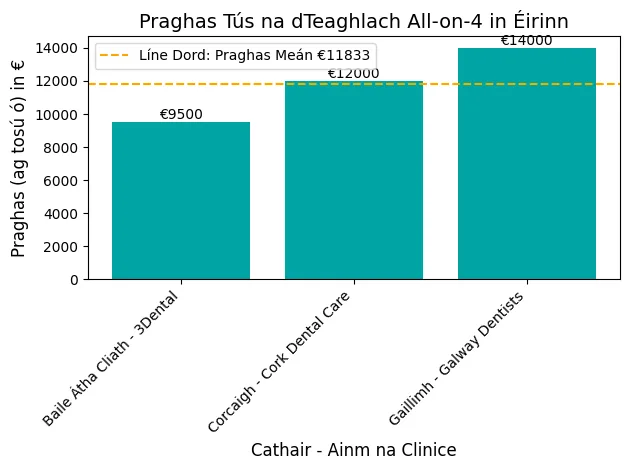Pterygoid dental implants are a lifeline for those with severe bone loss in the upper jaw where traditional implants fail.
If you’ve been told you don’t have enough bone for implants, this could be the answer you’ve been looking for.
What are Pterygoid Dental Implants?
Pterygoid dental implants are a special solution for patients with severe bone loss in the upper jaw where traditional implants are not possible. Anchored in the dense pterygoid plates, these implants avoid the need for sinus lifts or bone grafts and can be loaded immediately, with success rates over 95% in clinical studies. This means they can restore full mouth function and aesthetics even in difficult cases.

Indications and Candidates
Pterygoid implants are a game-changer for patients with limited bone quantity in the upper jaw, especially in the posterior maxilla.
The presence of the maxillary sinus often complicates implant placement, making traditional methods less viable.
Pterygoid implants bypass this issue, eliminating the need for augmentation procedures and providing a robust solution for implant placement.
These implants are particularly indicated for patients who face challenges such as:
Insufficient bone quantity in the upper jaw, which makes traditional dental implants unfeasible.
The anatomical presence of the maxillary sinus, which can obstruct conventional implant placement.
Partial or total edentulism, where patients are missing some or all of their upper teeth.
The need for a fixed dental bridge or prosthesis to restore dental function and aesthetics.
A desire to avoid bone grafting procedures, which can be invasive and require longer recovery times.
By addressing these specific needs, pterygoid implants offer a reliable and effective solution for restoring dental function and aesthetics in patients with complex cases.

Benefits of Pterygoid Dental Implants
Pterygoid dental implants are beneficial for patients with severe bone loss in the upper jaw when traditional implants are not possible.
No Extra Procedures
Unlike traditional implants, pterygoid implants don’t require sinus lifts or bone grafts, reducing treatment time and risk of additional surgery (1).
Immediate Function
These implants can be loaded immediately, so patients can have a full set of teeth on the same day as the surgery, more convenience for the patient (2).
High Success and Stability
With success rates over 95%, pterygoid implants provide long-term stability as they are placed in dense bone, less chance of implant failure compared to conventional methods (3).

Comparison with Zygomatic Implants
Pterygoid and zygomatic implants
Both are for patients with severe bone loss in the upper jaw but differ in placement and complexity.
Pterygoid implants are placed in the pterygoid plates at 45 degrees, providing strong support without interfering with the sinus cavity and being less invasive (4).
Zygomatic implants are longer and placed in the zygomatic bone (cheekbone) for more extreme cases where bone is almost non existent (1).
Both have high success rates of 95–97% but zygomatic implants require more complex surgery as they are close to the eye socket (5).
Pterygoid implants are preferred when some upper jaw bone is present to avoid additional surgical risks and faster recovery (2, 3).
The choice between them depends on the individual anatomical needs and desired outcome, which should be discussed with a dentist.
| Implant Type | Placement | Success Rate | Surgical Complexity |
|---|---|---|---|
| Pterygoid | Anchored in the pterygoid plates at a 45-degree angle | 95-97%[2,4] | Less invasive, simpler surgical approach[1] |
| Zygomatic | Anchored in the zygomatic bone (cheekbone) | 95-97%[2,4] | More complex, higher surgical risk due to proximity to sensitive areas like the eye socket[1,5] |
Pterygoid Implant Procedure
Pre-SurgicalSurgical Procedure:
Evaluation: Patient health check and imaging (e.g., CT scans) for planning.
Planning: implant placement planning using 3D imaging and digital tools. Pre-surgical instructions.
Anesthesia:
Local or General Anesthesia: Numb the area or sedate as needed.
Surgical Procedure:
Incision and Flap Creation: Make an incision in the gum to access the bone.
Implant Placement: Drill and place pterygoid implants at 45 degrees in the pterygoid plates. Screw in place.
Post-Surgical:
Immediate Loading: Attach a temporary or permanent prosthesis the same day if possible.
Care Instructions: Follow hygiene, pain management and diet instructions. Follow up appointments.
Final Restoration:
Prosthetic Fitting: Once implants have integrated, fit the final prosthesis.

Treating Dental Implants with Bone Loss
Pterygoid dental implants are the solution for patients with severe bone loss in the upper jaw when traditional implants are not possible.
They are placed in the dense pterygoid plates; no sinus lifts or bone grafts are required, and they can be loaded immediately. They have long-term stability with success rates over 95% in clinical trials.
Integration with Treatment Plans:
All-On-4 Technique: Pterygoid implants can be used in the All-On-4 technique for added stability in cases of severe bone loss.
Comprehensive Rehabilitation: Pterygoid implants can be part of a comprehensive treatment plan when traditional implants are not possible due to bone loss.
Clinical Trials and Results:Long-term Results: Studies have shown long-term success rates of pterygoid implants in severe maxillary atrophy; implant survival and patient satisfaction are the key indicators of its effectiveness.
Comparison with Zygomatic Implants: Comparative studies between pterygoid and zygomatic implants show the difference in application and surgery to determine which one is suitable for the patient.

Conclusion & Key-Takeaways
Key-Takeaways:
Immediate Loading: Pterygoid implants can be loaded immediately for quick dental function restoration.
High Success Rates: Clinical trials over 95% success rate, long-term stability, and effectiveness.
No Additional Surgery: Unlike traditional implants, no sinus lifts or bone grafts are required, making them less invasive.
Integration with Treatment Plans: Pterygoid implants can be part of comprehensive treatment plans using the All-On-4 technique for added stability in bone loss cases.
Suitable for Complex Cases: For patients with severe bone loss, when other implants are not possible.
Conclusion:
Pterygoid dental implants are a strong and effective solution for patients who have challenges with traditional dental implant placement due to severe bone loss.
Anchored in the dense pterygoid plates, these implants can be loaded immediately, with high success rates and full mouth function and aesthetics even in complex cases.
No additional surgery is required, like sinus lifts or bone grafts, a simplified and reliable option for patients with severe bone loss.

FAQ
References
Pabst AM, et al. Pterygoid implants versus zygomatic implants: Indications and surgical outcomes. Int J Oral Maxillofac Surg. 2017;46(1):20-29.
Article: Pterygoid implants versus zygomatic implants: Indications and surgical outcomes
Aparicio G, et al. Long-term outcomes of pterygoid dental implants in severe maxillary atrophy. Clin Implant Dent Relat Res. 2014;16(5):647-659.
Article: Long-term outcomes of pterygoid dental implants in severe maxillary atrophy
Krekmanov L, et al. The application of pterygoid implants in the rehabilitation of the atrophic posterior maxilla: A systematic review. J Oral Implantol. 2011;37(5):562-567.
Migliorati M, et al. Comparison of pterygoid and zygomatic implants: A cohort study on implant survival rates and patient satisfaction. J Clin Periodontol. 2019;46(6):663-670.
Article: Comparison of pterygoid and zygomatic implants: A cohort study on implant survival rates and patient satisfaction
Maló P, et al. The role of pterygoid implants in All-On-4 rehabilitation of the atrophic maxilla: A clinical study. Clin Oral Implants Res. 2018;29(9):943-949.
Article: The role of pterygoid implants in All-On-4 rehabilitation of the atrophic maxilla: A clinical study
Starch-Jensen T, et al. Pterygoid implants as an alternative to sinus floor elevation: A systematic review. J Stomatol Oral Maxillofac Surg. 2019;120(6):520-525.
Article: Pterygoid implants as an alternative to sinus floor elevation: A systematic review




